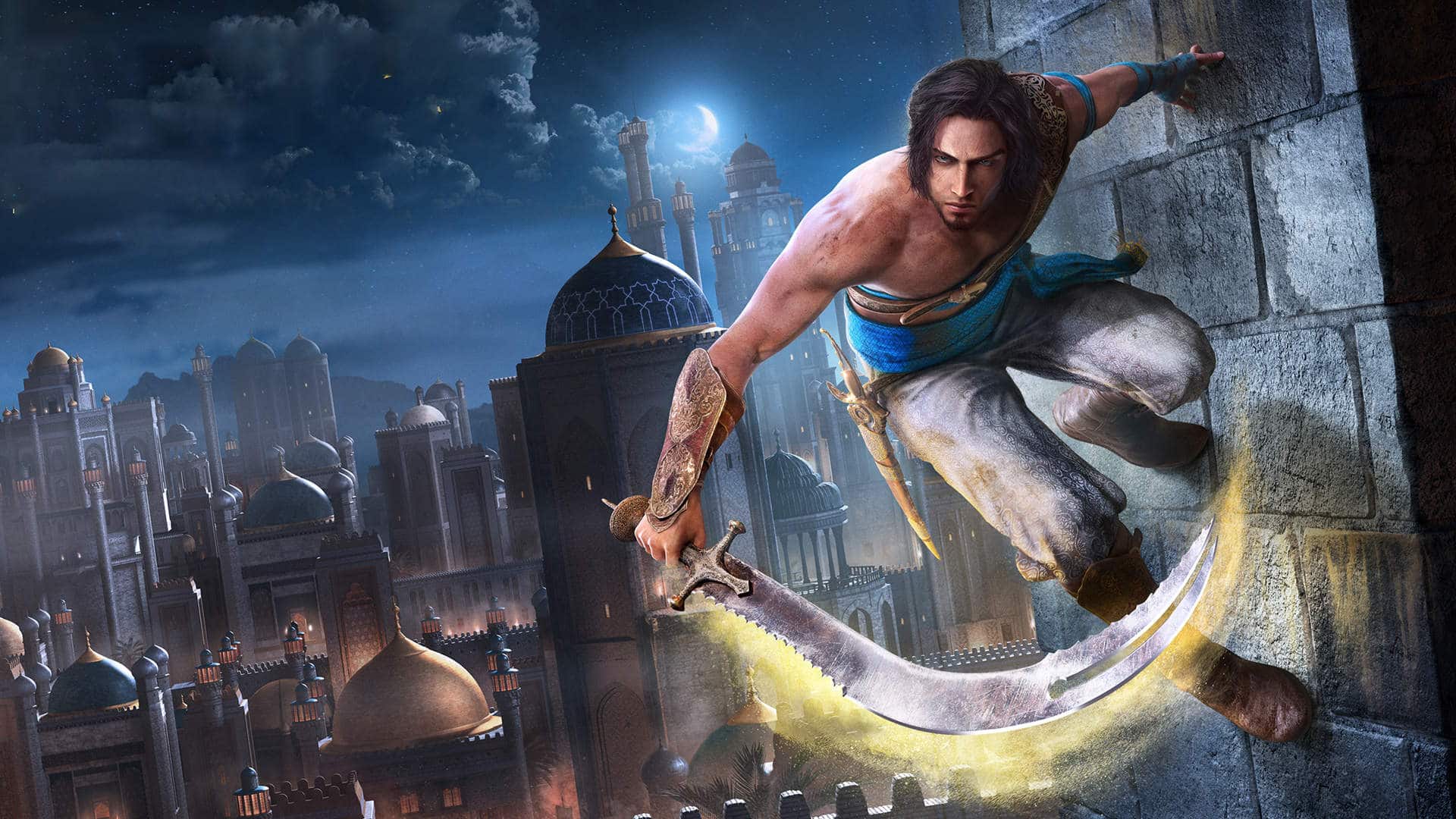Story of a Game: Prince of Persia – The Sands of Time
Games have stories. Not just stories of how they were developed, but stories from the people that played them and the way they affected the gaming world.
In this series, Ultimate Gaming Paradise is going to bring you some of the stories of games, from headline-making triple-A titles, through to some indie masterpieces.
Be wary of traps ahead—we’re looking into The Sands of Time.
An Unknown Prince
Spinning tales of this unnamed prince requires us to go back a little before the 2003 release of Prince of Persia – The Sands of Time. Before he picked up a magical dagger capable of controlling time, this unnamed protagonist had already starred in three games. Sort of.
The original Prince of Persia was a landmark game of the late-1980s. Developed for the Apple II by a single programmer, Jordan Mechner, the first Prince of Persia game was an action-adventure title that brought a mix of puzzle-solving, pixel-perfect jumps and swordplay to an audience that had never seen anything like it. There was plenty of this 1989 game that was revolutionary, but the thing that everyone spoke about was the incredibly fluid movement that the main character had. It was, perhaps, the smoothest sprite animation of a generation.
Prince of Persia was a hit and was ported to almost every system available at the time. It was followed by a more colourful (and slightly more gruesome) sequel which was met with similar eagerness, before the rights to the game were sold off and a third title that bore no resemblance to the greatness that had gone before it threatened to kill the series dead.
To say that 1999’s Prince of Persia 3D wasn’t quite what anyone expected from the franchise is a minor understatement. It was, to coin a phrase, a steaming pile of turd.
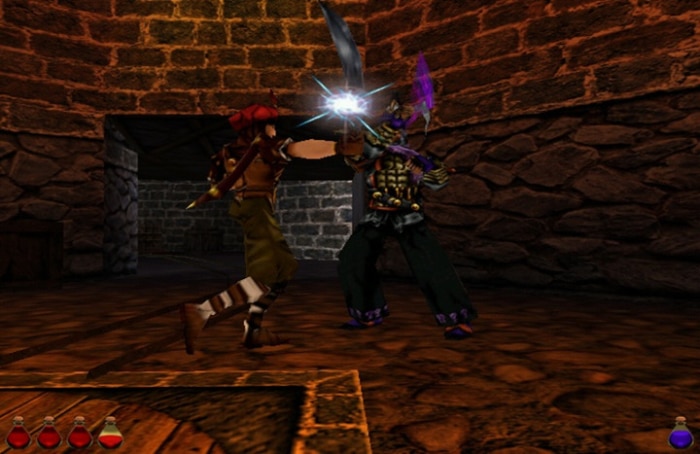
Thanks Red Orb Entertainment.
Thankfully, the story doesn’t end there. Ubisoft bought the rights to the IP and a few years later decided to do justice to the series. They dismissed Prince of Persia 3D with the disdain it deserved and took up the challenge of making a true Prince of Persia game for the new millennium.
Parkour for Beginners
Learning from other people’s mistakes is always good. What Prince of Persia 3D had done that helped it into failed obscurity was simple—it didn’t have anything to really do with what had made the first two games so great. There was no fluidity of movement (the key point), and it lacked the sense of dancing swordplay that also threaded the original. So, that’s where Ubisoft started.
Parkour, that strange but impressive sport that sees fit people running up walls and over rooftops, was becoming big worldwide, with videos circulating of humans performing acrobatic manoeuvres that seemed like magic for common folk. Looking to upgrade the prince’s two-dimensional smoothness into a modern three-dimensional arena, the development team looked no further than this burgeoning street activity. The prince was meant to be agile and acrobatic, so it made sense to fashion him in a similar way. It didn’t hurt that films such as Crouching Tiger, Hidden Dragon and The Matrix had also taken the world by storm, showing that the public had a certain affinity for humans moving in a way that just looked cool. Really, really, cool.
The end result was a main character with more than 780 animations—someone who could run along walls, backflip over enemies before delivering a cool strike to the chest, slide down curtains, fence like a pro, and dance cartwheeling out of battle when needed. Just as the original prince had wowed gamers with his incredible animation and detail more than a decade earlier, this updated prince was the ultimate mover.
Fluid Combat
Put a character with such smooth movement into a fight and what did you get? Years before Batman: Arkham Asylum would do similar things with the caped crusader, Prince of Persia – The Sands of Time gave a third-person combat system that saw you spinning, jumping, and smoothly slicing at groups of enemies like it was choreographed.
With just these two elements, there was enough to make a fantastic game with running, jumping, and fighting.
But wait—there’s more!
The Palace of Azad
If the main character’s famous agility was one of the game series’ enticements, the other had to be the setting. For a western audience, the sandy otherworldliness of Prince of Persia offers a delightful alternative fantasy setting. Unlike the standard verdant forests of traditional epic worlds, such as Middle Earth, there’s something delightfully exotic about the prince’s homeland, filled with smells of incense and floating silks.
For The Sands of Time, the developers created the Palace of Azad, a sprawling arena filled with deadly traps (set off by the prince himself, oops!) that shone in the PS2 / Xbox era of gaming. Taking nods from many sources, ranging from the Middle East through to India, the Palace gives us seductive bedrooms, luscious gardens, polished marble corridors, and intricate mechanisms—plus a whole range of puzzles.
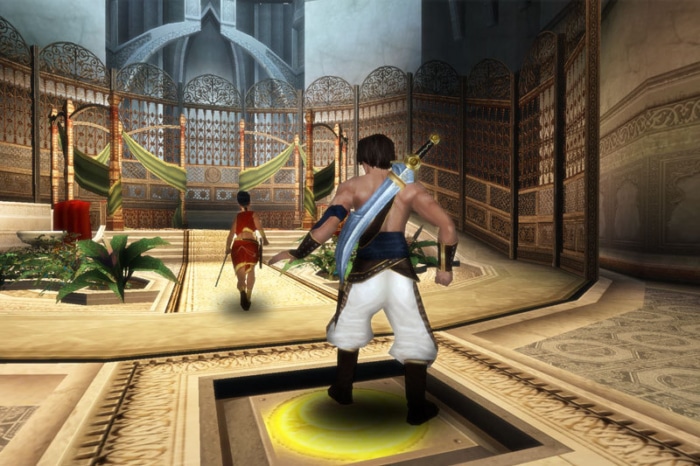
It’s an adventurer’s delight.
But wait—there’s still more!
No, No, No, That Didn’t Happen
The eponymous sands of time provide a game mechanic so utterly brilliant that they are deserving of an award. In fact, I think they got a few. Ah yes, E3’s “Game of the Year 2003”, “Best Action/Adventure Game” at the 2003 Game Critics Awards, “Console Game of the Year” from the Academy of Interactive Arts and Sciences, alongside eight other awards in various categories, plus a couple more at the 2004 Game Developers Choice Awards, including “Excellence in Game Design”.
Phew.
Why? Because it’s bloody brilliant, that’s why.
Games having checkpoints was old news by this point, and saving and loading had been around forever, but how many times have you slipped up and made a mistake in a game and just wished you could undo the last few seconds? The answer? A million. Two million. Ten.
Game director, Patrice Désilets, felt the same way playing Donald Duck: Goin’ Quackers (yes, I know) and suggested a rewind function as a game mechanic. Thanks Donald!
Everything about the magic dagger rewinding the sands of time is executed beautifully, from the in-game mechanic usefulness itself to the little voice-over that happens when you do. Ah yes, the voice-overs… that’s right, there’s more!
A Script Worthy of a Film
The Sands of Time fits an engaging story narrative in the box alongside everything else. Written by the first game’s developer, Jordan Mechner (remember him?), the chatty script for the game manages to be equal parts funny, sassy, clever, and entertaining. The protagonist is likeable and his princess counterpart, Farah (who hasn’t even had a mention yet), is utterly brilliant. They are also played fantastically by the voice actors, adding a huge dimension to the game.
It’s a love story, an adventure story, and a story about time manipulation all wrapped up in a pretty bundle. What’s not to like?
Plus, it did go on to inspire a film. The film’s crap though, don’t bother.
But wait—there’s yet more!
Running Through Silence
Prince of Persia – The Sands of Time has a soundtrack, I know it does. But I don’t remember it. What I remember is silence, peppered with the occasional sounds of something happening off in the distance; some insects, perhaps, or a whistle of wind. Or, very importantly, the unmistakable sound of a trap closing.
The use of sound is as intrinsic to the game as the graphics. Music kicks up when you’re about to fight, and there’s a soft wistful droning during visions, which also contain enticing whisperings that you try desperately to catch; gates clunk down on timers with a satisfying click-and-thud that’s reminiscent of the sound effects of the very first game, and the sound of metal on stone comes through clearly as you push panels and move chunks of intricate mechanisms.
If you are after atmosphere, look no further.
But wait-yup, still not done!
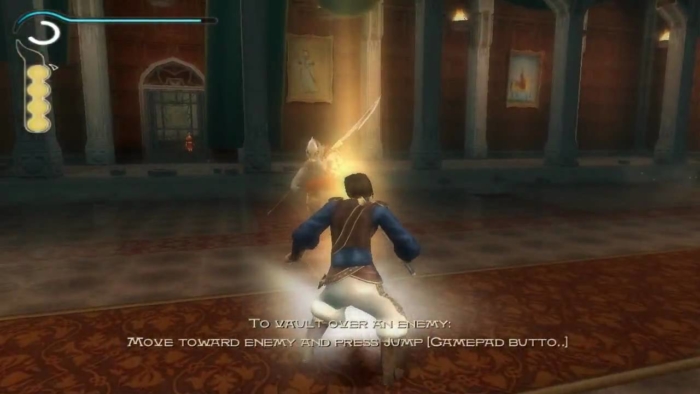
Playing Nice with the Princess
You are not alone in your mission. While you cannot control her in any way, the wonderful Farah is out there helping you (or needing your help). Should she die, the game is over, but then the same is true for you. Jump in and save her, or be thankful that she’s there to save you on occasion. The interaction with Farah adds to that connection that grows between the two of you and helps the story hit home.
Developing the Adventure
Creating Prince of Persia – The Sands of Time wasn’t all easy. Like many games, the development team found themselves up against deadlines and almost unrealistic expectations. An early demo at E3 2003 received a huge amount of interest (which was great) but also meant that the team were now on the line to develop a complete game that looked and played just as impressively (which wasn’t).
Having presented a short concept demo that had taken quite a lot of time to put together, the pressure on them to make the entire game as good throughout meant that some planned sections had to be cut out. Goodbye slave village, farewell riddle-laden sphinx.
Even before the demo forced long days and sleepless nights, there were little technicalities that made coding difficult.
The core code was not properly setup for multiple developers to work simultaneously on shared data—something that would be part of any development today, but that was simply lacking at the time. It was fine at the beginning when the whole team comprised of only seven people, but when it was all hands on deck as the release date came ever closer, the structure soon began to show cracks.
There was no art director for the first ten months of conception and early development, the amount of time spent perfecting the prince’s movements meant there were fewer hours to make enemies have quite the same grace, and Farah’s AI proved more time consuming to get right than had been hoped—meaning she often had to have specific code for each encounter that came up, rather than a generic central adaptive algorithm that could handle any situation.
But they ploughed on! A strong desire to get it right, combined with some excellent level design tools and a collaborative work ethic meant that the final product was delivered on time and (relatively) bug-free.
A Visceral Connection
Playing The Sands of Time was (and is) an absolute delight. The way the game responds to the controls provides an intellectual illusion that you’re actually there, doing these fantastic acrobatic moves and cutting down enemies with all the skill of the prince. Like a child energised by imaginative role play, you would find yourself looking at walls and alleyways on a walk through town and wondering if you could run up the side, leap across and shimmy your way along a rooftop with the same skill. You believe you have the experience, so why not? A quick glance down at the sagging belly and the realisation that you don’t have the body strength for a few press-ups, let alone a single-handed pull-up onto a high wall, reminds you of the truth, but for a minute there the fantasy remains intact.
Just like the way a good driving game makes you believe you could make impressive lap times at the Nürburgring, and a stint with a sniper rifle in Call of Duty convinces you that the SAS will be requesting you to aid them in an international incident very soon, playing Prince of Persia – The Sands of Time tricks you into believing you are fit, strong and athletic which, unless you are, you’re not.
You can’t turn back time, either.
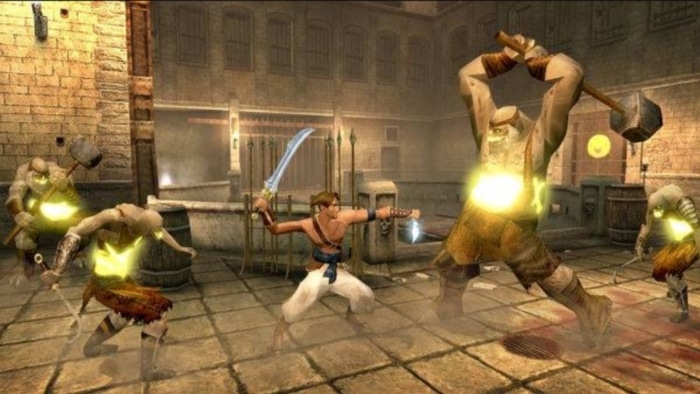
The Prince’s Legacy
Prince of Persia – The Sands of Time has been directly responsible for, or simply influenced, so many games that came after it. Most notably, some of the team at Ubisoft responsible for the title went on to make another parkour-based series—Assassin’s Creed. Outside of that, you can see the influence of the unnamed prince in the aforementioned Batman: Arkham Asylum and its sequels, in the Uncharted series, in Tomb Raider titles, Mirror’s Edge, and the newer Spider-Man games.
It also spawned its own sequels. The Sands of Time itself is part one of a trilogy, there’s a later Prince of Persia game from 2008 that’s well worth playing, and the Sands of Time storyline is picked up once more in Prince of Persia – Forgotten Sands from 2010.
Somewhat excitingly, despite delays, there’s a 2022 remake of Prince of Persia – The Sands of Time, re-developed for PS4 / Xbox One era hardware and with completely new motion capture and graphics.
And we’re done. I’ll start the story from here next time.

